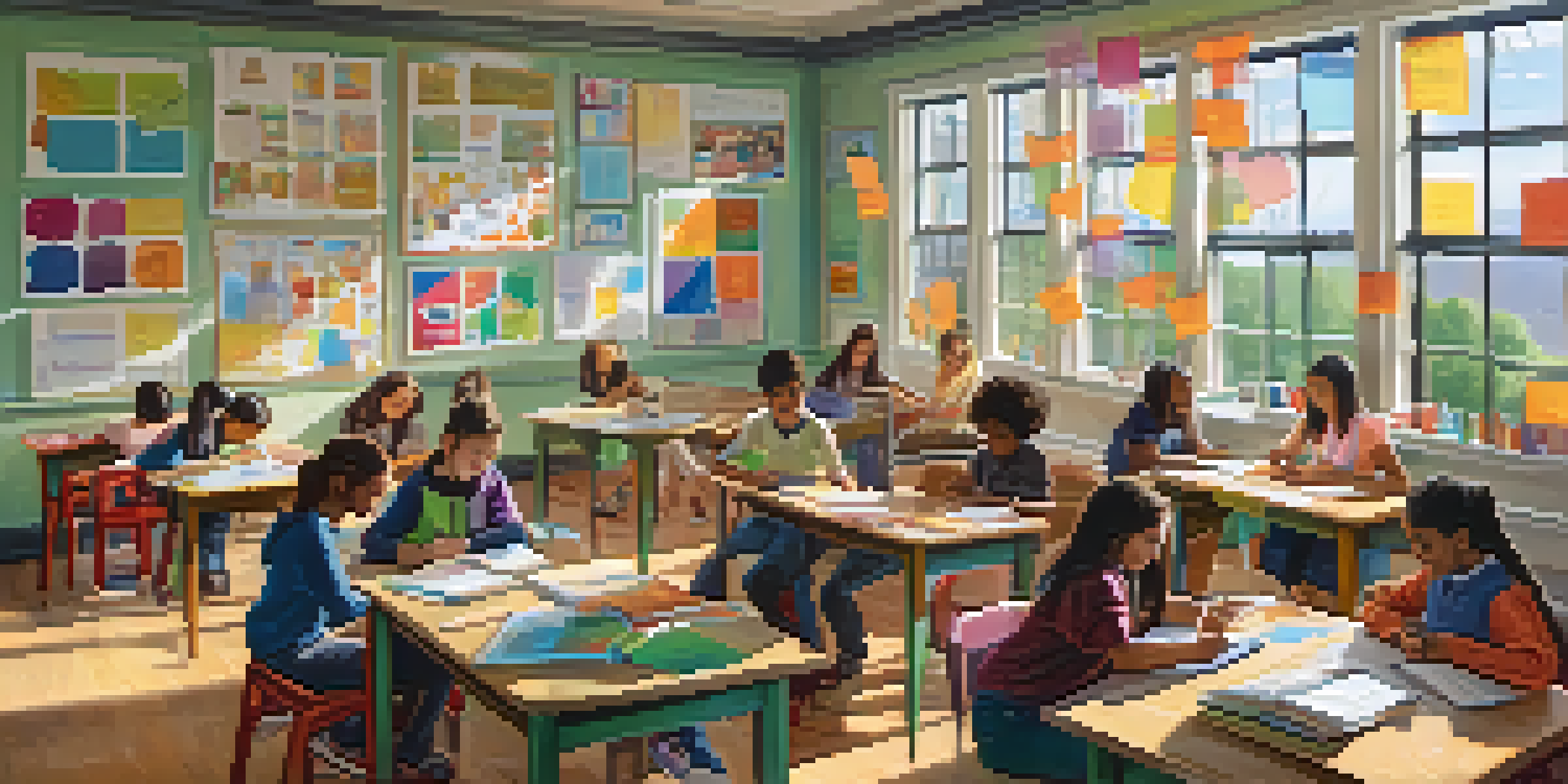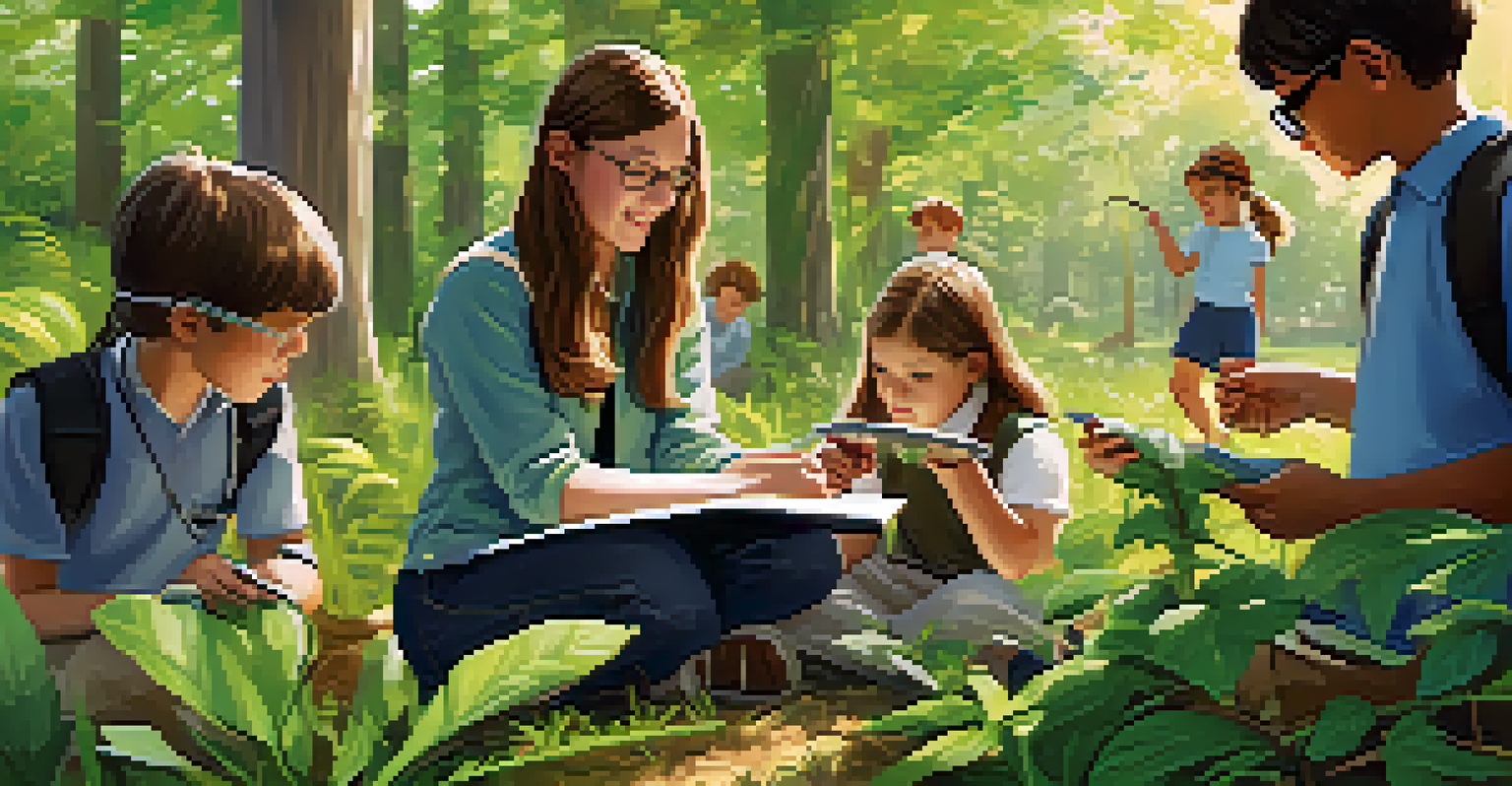Inquiry-Based Learning vs. Traditional Teaching Methods

Understanding Inquiry-Based Learning and Its Principles
Inquiry-based learning (IBL) is an educational approach that emphasizes students' active participation in their own learning. Instead of the teacher simply delivering information, students are encouraged to ask questions, explore, and discover answers for themselves. This method nurtures curiosity and fosters critical thinking skills, which are essential for problem-solving in real-world situations.
Education is not the filling of a pail, but the lighting of a fire.
In IBL, the role of the teacher shifts from being the primary source of knowledge to a facilitator who guides students through their inquiries. Teachers help students formulate their questions and provide resources or support as they investigate. This collaborative atmosphere often leads to deeper understanding and retention of the material, as students become more invested in their learning process.
A key element of inquiry-based learning is its focus on real-world applications. By connecting learning to actual problems or projects, students can see the relevance of what they are studying. This not only makes learning more engaging but also equips students with skills they can use beyond the classroom.
Defining Traditional Teaching Methods and Their Approach
Traditional teaching methods are often characterized by a teacher-centered approach, where the instructor delivers content through lectures, textbooks, and direct instruction. In this model, students typically receive information passively, leading to a more standardized and uniform learning experience. While this method can be effective for delivering content quickly, it may not always engage students fully.

In a traditional classroom, assessment tends to focus on memorization and recall of information, often through standardized tests. This can create an environment where students prioritize grades over genuine understanding. While some students thrive in this structured setting, others may find it stifling and disengaging, limiting their full potential.
Inquiry-Based Learning Engages Students
This approach encourages active participation, fostering curiosity and critical thinking skills.
Despite its limitations, traditional teaching methods have their benefits, particularly in providing a clear framework and structure for learning. For subjects that require foundational knowledge, such as mathematics and grammar, direct instruction can effectively establish the necessary skills before students move on to more complex concepts.
Comparing Engagement Levels in Both Learning Approaches
Engagement is a crucial factor in determining the effectiveness of any teaching method. Inquiry-based learning tends to foster higher engagement levels since students are actively involved in their learning process. They are more likely to ask questions, share ideas, and collaborate with peers, which can create a dynamic classroom environment.
The greatest sign of a success for a teacher is to be able to say, 'The children are now working as if I did not exist.'
In contrast, traditional teaching methods may lead to lower engagement, particularly for students who prefer hands-on or interactive learning experiences. When students are merely passive recipients of information, they might struggle to connect with the material, resulting in boredom or disinterest. This disengagement can affect their motivation and overall academic performance.
However, it is important to note that engagement can vary among students, regardless of the teaching method used. Some learners thrive in structured environments, while others may feel stifled. The key is to find a balance that accommodates different learning styles and needs, ensuring that all students can engage meaningfully with the content.
The Role of Critical Thinking in Inquiry-Based Learning
Critical thinking is at the heart of inquiry-based learning, as students are encouraged to analyze, evaluate, and synthesize information rather than simply memorizing facts. This approach helps students develop essential skills that are applicable in various situations, from academic pursuits to everyday decision-making. By engaging in inquiry, students learn to question assumptions and consider multiple perspectives.
Furthermore, inquiry-based learning promotes a growth mindset, where students view challenges as opportunities for growth rather than obstacles. This mindset encourages resilience and adaptability, traits that are increasingly valuable in today's rapidly changing world. As students face complex problems, they learn to approach them systematically, breaking them down into manageable parts.
Traditional Teaching Has Limitations
While effective for foundational knowledge, it may lead to disengagement and a focus on memorization.
In contrast, traditional teaching methods may not prioritize critical thinking to the same extent. While students can develop critical thinking skills through discussions and projects, the focus often remains on content delivery. Hence, integrating elements of inquiry into traditional methods can enhance critical thinking opportunities, providing a more balanced educational experience.
Assessing Learning Outcomes: Inquiry vs. Traditional Methods
Assessing learning outcomes can differ significantly between inquiry-based learning and traditional methods. In inquiry-based classrooms, assessments often include projects, presentations, and reflections that showcase students' understanding and application of knowledge. This approach provides a more comprehensive view of a student's abilities, emphasizing growth and mastery over rote memorization.
On the other hand, traditional teaching methods frequently rely on standardized tests and quizzes that measure students' ability to recall information. While these assessments can provide valuable data on student performance, they may not fully capture a student's critical thinking or problem-solving skills. As a result, the focus on high-stakes testing can sometimes overshadow other important aspects of learning.
Integrating both assessment approaches can yield the best results. By combining formative assessments from inquiry-based learning with traditional methods, educators can create a more holistic understanding of student progress, allowing for targeted support and intervention when needed.
Challenges and Limitations in Both Learning Approaches
While inquiry-based learning offers numerous benefits, it is not without its challenges. Teachers may find it difficult to balance guiding students through their inquiries while ensuring that curriculum standards are met. Additionally, some students may struggle with the open-ended nature of inquiry, requiring extra support to navigate their learning paths effectively.
Conversely, traditional teaching methods can become monotonous if not adapted to meet the needs of diverse learners. The one-size-fits-all approach may leave some students feeling disengaged or unchallenged, which can hinder their progress. Furthermore, excessive emphasis on testing can create stress for both students and teachers, detracting from the joy of learning.
Combining Methods Enhances Learning
A blended approach integrates the strengths of both inquiry-based and traditional methods for a comprehensive educational experience.
Understanding these challenges allows educators to adapt their teaching strategies. By recognizing the strengths and limitations of both inquiry-based and traditional methods, teachers can create a more inclusive and effective learning environment that caters to the varied needs of students.
Finding a Balance: Combining Inquiry and Traditional Methods
Finding a balance between inquiry-based learning and traditional teaching methods can be key to fostering a comprehensive educational experience. Many educators are now adopting blended approaches that integrate the strengths of both models, allowing for a more versatile and engaging classroom. This means incorporating direct instruction when necessary while also providing opportunities for student-led exploration.
For example, a teacher might introduce a new concept through a lecture and then allow students to work on a project that encourages inquiry. This way, students receive foundational knowledge while also engaging in critical thinking and hands-on learning. Such an approach helps to cater to various learning preferences, ensuring that all students can thrive.

Ultimately, the goal is to create a learning environment that inspires curiosity and fosters a love for learning. By combining the best aspects of inquiry-based and traditional teaching methods, educators can equip students with the skills and knowledge they need to succeed both academically and in life.